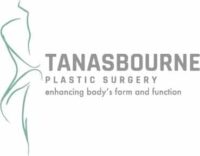Breast reconstruction is a surgical procedure often performed after a mastectomy to offer patients psychological and aesthetic benefits when recovering from breast cancer. This procedure allows many women to fully return to the life they enjoyed before being diagnosed with breast cancer, with barely any signs of the disease remaining. This procedure may also be performed to correct congenital or traumatic deformities, or any other condition that may result in breast deformity.
For many women, breasts are an important symbol of femininity that helps define their self-confidence and body image. The emotional affects of an altered appearance can be as psychologically damaging as the condition or injury that caused it. Breast reconstruction serves to restore a woman's body to its original condition after the treatment of breast cancer.
Candidates
Although breast reconstruction is a beneficial procedure for many women, it is not right for everybody. In order to undergo any kind of breast reconstruction surgery, women should be in good general health and able to handle the stress of a surgical procedure. Certain factors may increase your risk of complications with breast reconstruction surgery, and it may be best to postpone this procedure until risk factors are reduced.
Techniques
There are two basic types of breast reconstruction: those that use a breast implant to replace the removed breast tissue, and those that use skin and fat from another area of the body (known as autologous tissue). With both procedures, there are several different modifications that can be made to best suit the individual patient's needs.
Implant-based breast reconstruction is performed similar to a breast augmentation, with the use of a silicone or saline-filled implant to replace breast tissue. A breast implant requires coverage with the patient’s breast skin, much of which may have been removed during mastectomy. If additional skin coverage is needed, it can be provided by using a tissue expander to stretch the remaining breast skin and muscle over a period of several weeks before being replaced by a permanent implant. Skin taken from the patient’s back can also be transferred to the breast area to cover the implant.
Autologous tissue-based breast reconstruction uses a flap of the patient’s own skin and fat from another part of the body, with or without the underlying muscle, which is transported to the chest to create the reconstructed breast. This flap may remain attached to its original blood supply or can be reattached to another part of the body. There are several different types of flaps that can be used during breast reconstruction depending upon the condition of the breast area after the mastectomy.
Perforator Flap
A perforator flap is an advanced breast reconstruction technique that allows a woman to achieve successful reconstruction through the use of her own abdominal or buttock tissue, without the need for muscle or implant use. This technique creates a breast that is soft and warm, and can restore a woman's natural, healthy body image.
Excess skin and fatty tissue from the abdomen (deep inferior epigastric perforator, or DIEP) or buttocks (gluteal artery perforator, or GAP) is transplanted to the chest wall area to reconstruct a new breast. A perforator flap reconstruction is performed by transplanting the skin and fat with its own set of blood vessels, which have been carefully separated from the muscle. This allows for less pain and quicker recovery with no reduction of function.
DIEP Flap
A deep inferior epigastric perforator (DIEP) flap uses skin and tissue from the abdominal area to recreate the breast mound after a mastectomy procedure. In most cases, there is enough excess fat and skin in the tummy area to create a new breast mound and restore the patient's appearance.
During the DIEP flap reconstruction procedure, an incision is made across the stomach, just below the navel, and layers of skin and fat are lifted up, similar to the technique used in a tummy tuck procedure. Along with the deep inferior epigastric perforator artery and vein, which are preserved to supply blood to the new breast tissue, the tissue flap is then moved to the breast area. The blood vessels are reattached using microsurgery and the transported skin and fat are reshaped to create a breast mound before they are sutured into place.
After the DIEP procedure, patients will likely need to stay in the hospital for three to four days so that the healing process may be monitored by your doctor and nurses. Drains can usually be removed a week after surgery, and you will likely be able to return to work after four to six weeks of rest. It is important for patients to see their doctor for regular follow-up appointments to monitor the healing of incisions and the health and appearance of the breast.
Unlike other abdominal flaps, a DIEP flap does not involve moving any muscle, and results in less pain and shorter recovery times. Patients can also benefit from a flatter and more toned abdomen after skin and fat are removed. This procedure takes longer to perform than other flap procedures, but its benefits often outweigh the extra procedure time.
Latissimus Flap
The latissimus dorsi (LD) flap has been used successfully with implant or tissue expander reconstructions since the 1970s, providing women with a natural-looking, aesthetically-pleasing reconstructed breast. Composed of soft tissue, this type of flap often enhances an implant reconstruction to produce breasts that look and feel more natural.
During an LD flap reconstruction, a muscle flap (and attached skin, if needed) is taken from the back and moved through a tunnel to the front of the chest. The LD flap receives its blood supply from the thoracodorsal artery, which remains attached after surgery to ensure proper blood flow to the flap. This helps ensure that the transported skin and muscle will continue to live in the breast. LD flap breast reconstruction usually takes two to three hours to perform, and patients will need to stay in the hospital for one to three days.
Since this procedure requires two different surgical sites, recovery is longer than other reconstructive procedures. There will be scarring in the breast area and in the back, although the back incision can be made horizontally and then efficiently concealed with a bra strap. Patients will likely need to rest at home for three to six weeks in order to allow the treated areas to heal. It is especially important to avoid heavy lifting and strenuous activity during the healing process.
For women with small breasts, the LD flap can sometimes be used as the sole means of reconstruction with no need for an implant. This type of reconstruction is not recommended for patients with diabetes, vascular disease, or those who are overweight or smoke. Your doctor will help you determine the most appropriate reconstruction plan for your individual body and surgical goals.
Results
The results of breast reconstruction vary depending on the patient's individual case and the type of procedure used. Breast reconstruction using a perforator flap often produces the most natural-looking results through a safe, effective procedure.
While we strive to achieve the most natural-looking results for each patient's reconstructive procedure, reconstructed breasts will not have the same sensation and feel of a real breast. It is important for patients to remember this and to have realistic expectations before undergoing the reconstruction procedure.
If you are interested in learning more about breast reconstruction, and to find out if this procedure is right for you, please call us today to schedule a consultation.
For more information about our facial procedures, or to schedule an appointment, please complete our online form or call 503.297.9340

